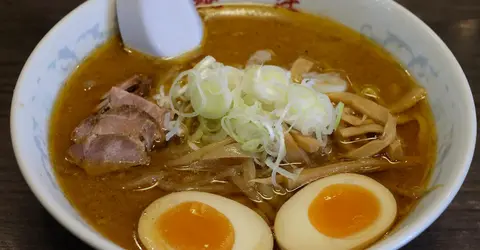Japanese noodles 日本の麺
All kinds of noodles
Like rice, noodles are a staple of the Japanese diet. They are often served in soup, fried, or eaten cold with a dipping sauce. Ramen and udon are probably the most famous noodle types outside of Japan, but they're not the only ones! Here's an overview of the main varieties of noodles found in Japanese cuisine.
Ramen, soba, somen and other wheat-based noodles
Ramen is the most popular noodle, in Japan and is also very popular in Japanese restaurants abroad. Originally from China, they are yellow noodles made from wheat flour, and generally served in soup. You may have heard of tonkotsu ramen (broth made from pork bones), shoyu ramen (broth made from soy sauce), miso ramen (miso broth), and shio ramen (salt broth). There's also curry ramen, where the broth is made with Japanese curry.
You can enjoy different kinds of ramen throughout Japan:
Soba is a type of noodle made from wheat and buckwheat flour. Soba can be served hot in broth or cold with a dipping sauce. Interestingly the popular dish "yakisoba", fried noodles cooked with pork, vegetables and egg, is in fact made using Chinese noodles and not actually made with soba! Along with udon, soba is the most consumed type of noodle in Japan.
The third type of most well-known noodle is udon. Easily recognizable, the noodles are thick and white. Like soba, they are served both hot and cold, in soup, with a dipping sauce, or fried (yakiudon). As they are often prepared in a similar way, in some fast noodle restaurants, you are asked to choose between soba or udon for your soup.
Udon to try in Kansai :
Other types of slightly less well-known wheat-based noodles are somen and hiyamugi. In reality they are very similar to udon in terms of preparation, and differ only in size and thickness. Somen noodles are very thin, like Italian vermicelli, with a wheat flour base, while hiyamugi noodles are medium in size (between 1.3 and 4 millimeters in diameter).
Noodles made from starches and seaweeds
Japanese cuisine is very good at incorporating plants and seafood into daily recipes, such as konnyaku or agar-agar. The same goes for noodles.
Shirataki are noodles made from konnyaku (also called konjac) - the heart of a plant that grows in subtropical climates. This ingredient has a great reputation in Chinese medicine and is considered good for health. In Japan, shirataki noodles are often used to add texture to some dishes because konnyaku makes them pleasantly chewy.
Harusame are a type of transparent noodle made from potato starch. The Japanese enjoy them in salads or in hotpots, where they are briefly cooked in a very hot broth.
Finally, tokoroten are a type of noodle made from agar-agar (a gelling agent made from red algae). It is a very old type of noodle, long used in Japanese cuisine, and always appreciated. Today it's eaten hot or cold, sweet, in a jelly, or savory. It's also a refreshingly popular summer starter: eaten with a soy-vinegar sauce, and toppings such as nori or sesame.

Typical miso ramen from Sapporo (Hokkaido)
Jun Seita
Regional versions
Each region has its own version of the noodle classics, with the recipes having being adapted to reflect local tastes and specialties.
For example, you can try garlic ramen in Aomori Prefecture. In Hokkaido, preference varies from one city to another: in Sapporo they like miso broth, in Asahikawa soy is the flavor of choice, and in Hakodate a salt broth is preferred.
And in Okinawa, there's no buckwheat so soba are made from 100% wheat flour, making them unique.
Kyushu has benefited from a strong Chinese influence over the centuries, and champon, a local specialty, has kept the Chinese method of cooking the noodles directly in the broth, something unthinkable for classic ramen in Japan. Other ramen recipes from the same region are famous for their rich broth made from pork bones.

























